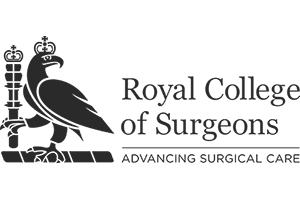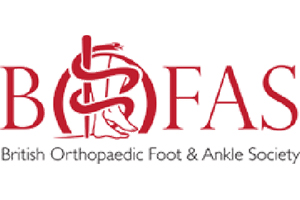This operation is to remove an inflamed and/or swollen nerve in the ball of your foot trapped between 2 bones.
Why would it be done?
A Morton`s neuroma causes pain in the ball of your foot and possibly your toes. It can sometimes be treated with simple measures such as comfortable shoes, weight loss, insoles and simple pain tablets. If these measures do not work, an injection of local anaesthetic and corticosteroid will be tried and if this is not sufficient to control your symptoms, the trapped nerve can be surgically removed. Occasionally people have morton`s neuromas in both feet.
What does the operation involve?
A cut is made on top of the foot between the metatarsal bones. The nerve is identified and a short section is removed. The skin is then stitched up and the foot dressed with a firm bandage.
Can it be done as a day case operation?
If you are medically fit, have someone who can collect you and look after you after the operation, and you are comfortable afterwards, the operation can be done on a day case basis.
However, if you have other medical problems such as diabetes, asthma or high blood pressure, you may have to be admitted the day before for tests and stay overnight after surgery. If you cannot be collected and looked after you must stay overnight to avoid complications.
The commonest reason for having to stay overnight after foot surgery is for pain control. Local anaesthetic injections can help with this, but not everyone is comfortable to go home. If you are having surgery on more than one morton`s neuroma, you will usually need to stay overnight.
Will I have to go to sleep (general anaesthetic)?
The operation can be done under general anaesthetic (asleep). Alternatively, an injection in the back, leg or around the ankle can be done to make the foot numb while the patient remains awake. Local anaesthetic injections do not always work and in that case you may have to go to sleep if the operation is to be done. Your anaesthetist will advise you about the best choice of anaesthetic for you.
In addition, local anaesthetic may be injected into your leg or foot while you are asleep to reduce the pain after the operation even if you go to sleep for the surgery. You will also be given pain-killing tablets as required.
Will I have a plaster on afterwards?
No, you will not have a plaster on.
What will happen afterwards?
You can go home when comfortable and safe. For the first 2 weeks, you should avoid walking if possible and only put your weight through the heel. When not walking, rest with your foot elevated to reduce swelling.
You will be seen in the clinic 2 weeks after your operation. The dressings will be removed, the wound examined and the stitches removed. You will then be more mobile and able to walk on your whole foot using crutches to support you. Another clinic appointment will be made for 4 weeks later.
How soon can I…
Walk on the foot?
You can do so immediately, but for the first 14 days you should avoid walking if possible and put all of your weight on the heel. When not walking you must rest with you foot elevated as much as possible to reduce swelling. After this you can be more mobile.
Go back to work?
This depends on what you do and how you get to work. If you have a sitting-down job that you could do with your foot in bandages, and you can get to work, you could probably go back to work 2-3 weeks after surgery. On the other hand, if you have a heavy manual job you may be off for up to 2 months. If you need to drive to work, this will affect when you can go back. Your surgeon will advise you about going back to work.
Drive?
Once your bandages have been removed you may be able to start driving again. You must be comfortable and not too stiff before trying to drive. Start by sitting in the car and trying the pedals then drive round the block. Drive short distances before long ones. Remember, if you cannot safely make an emergency stop your insurance will not cover you in the event of an accident. Ask your surgeon when it is safe for you to drive again.
Play sport?
After your dressings have been removed you can start gently exercising your foot and walking further each day. When you are comfortable doing this you can start gentle running and stretching. Contact, twisting and impact sports can follow as comfort dictates. Everyone is different in how quickly they can take up exercise again: be guided by your own body’s reactions and the advice of your surgeon. Most people can get back to most of their previous activities within 3 months of morton`s neuroma surgery.
What can go wrong?
The foot tends to swell up quite a lot after surgery. Swelling is part of your body’s natural response to any injury and surgery is no exception. In addition, your foot is at the bottom of your body so fluid tends to collect in its tissues (“at the bottom of the slope”) and cause swelling. People vary in how quickly this swelling disappears after an operation and 6 months is not all that unusual. Provided you are not having undue pain or inflammation there is probably nothing to worry about and you can afford to give it time.
The wounds usually heal quickly, but occasionally these can become infected and need antibiotics.
As the trapped nerve has been excised, the sides of the 2 toes it supplied will be permanently numb. Occasionally people find this slightly strange but usually they become accustomed to it.
Occasionally, the end of the nerve that has been cut can become trapped or inflamed and cause continued pain. For some of these people, further surgery is necessary.





